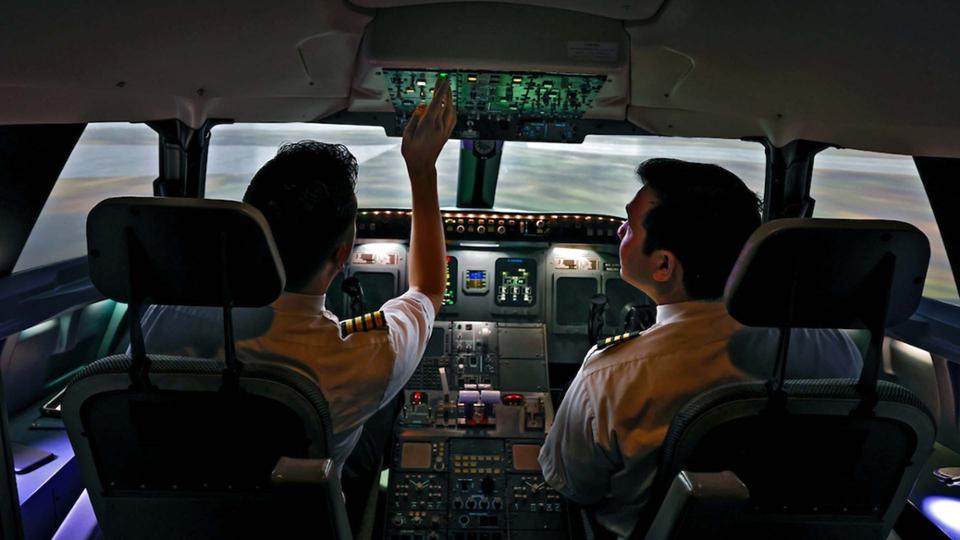100 Years of Aviation
The Oliver L. Parks Department of Aviation Science actively fulfills Saint Louis University’s mission of creating global citizens. For nearly 100 years, Parks students have been intellectually, technically and ethically prepared to be responsible leaders in the aviation industry.
The allure of Parks beyond its rich history, the Oliver L. Parks Department of Aviation Science offers an intentional, personable environment for aviation students. With small class sizes, students have the chance to create deep connections with faculty, staff and fellow students. Stephen Magoc, MBA, professor in the Department of Aviation Science, shared that the environment draws students from around the world to learn here.
“A lot of these kids will see the benefits of not being just a face out there in a crowd of hundreds of students in a class,” Magoc said. “Our program is small — everybody knows each other.”
Moreover, students get the chance to take to the skies early on. At larger universities, planes are stretched thin between hundreds of students, so many students do not get to fly until they are sophomores or juniors. Meanwhile, SLU students take flight for the first time during their freshman year.
“First semester, the first or second week they're in, they're flying,” Magoc said. “That’s one of the things that really attracts students — the same kind of thing with aviation management.”
Taking Flight
To support its instructional efforts, the Oliver L. Parks Department of Aviation Science maintains a varied fleet of aircraft for primary instrument training and commercial training. These efforts are conducted out of St. Louis Downtown Airport, between St. Louis Lambert International Airport and Scott Air Force Base. Students start with lighter training aircraft such as the Diamond DA20.
A lot of these kids will see the benefits of not being just a face out there in a crowd of hundreds of students in a class. Our program is small — everybody knows each other.”
Stephen Magoc, MBA, professor in the Department of Aviation Science
From there, they move up to Piper Seminole PA-44s for multi-engine training. These planes often hold hybrid systems, with analog and digital elements — ensuring all students are ready for the chance that their computer displays malfunction. Magoc shared that interacting with different types of equipment early on keeps students at the top of their fields.
“We try to stay at the front end of things,” Magoc said. “We're able to know that our students are getting the latest and the greatest education they can get.”
As students advance through the program, they switch to technically advanced aircraft. The Piper Archer PA-28-181 with Garmin G1000® NXi offers a glass cockpit with entirely digital tools, mirroring modern, commercial aircraft.
Preparing for Liftoff
Flight simulators enable students to practice on the ground instead of taking risks in the skies. SLU’s fixed simulators, Frasca TruFlite Advanced Aircraft Training Devices (AATD), mirror the experience of a Piper Archer or Piper Seminole flight deck. Undergraduate students often use these machines to familiarize themselves with instruments, navigate line-oriented flight training scenarios and learn to work in a crew environment.
In addition to the AATDs, McDonnell Douglas Hall boasts a state-of-the-art A lot of these kids will see the benefits of not being just a face out there in a crowd of hundreds of students in a class. Our program is small — everybody knows each other. Boeing 737 MAX-8 simulator.
Advanced students complete their capstone course in this machine, conducting flights as if operating a 200-seat, narrow-body airliner. These simulated experiences prepare students for the training they will receive as airline pilots.
The Oliver L. Parks Department of Aviation Science gives students the chance to get comfortable with aircraft types and ease their nerves. With years of students passing through, their consistent safety in the air signals the success of faculty’s instruction on the ground.
